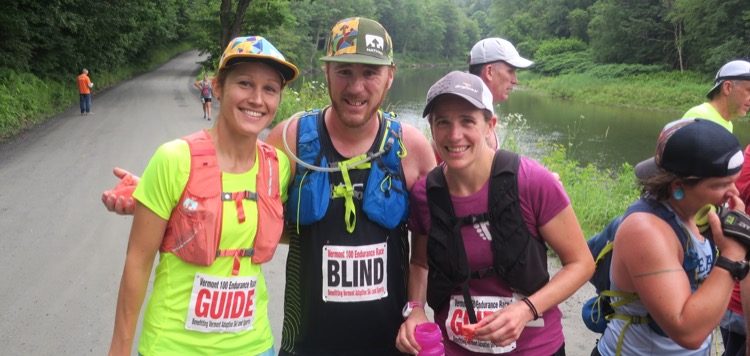Good races – races I want to run, crew and volunteer at – all have some key characteristics in common. It often boils down to leadership: good races have race directors who evolve.
For example, take the Vermont 100 Endurance Race. It’s renowned not only for its course and community, but for the fact that it raises thousands of dollars every year for the Vermont Adaptive Ski & Sports organization. More importantly, in 2018, race director Amy Rusiecki updated podium awards to be equal for both men and women. This wasn’t without controversy and extensive input from the ultrarunning community.
Another example is the Divide 100K. You’ve probably never heard of it, but it starts and ends in Georgetown, Colorado, traversing over the highest pass in North America on the Continental Divide. Race director Guy Love started the event in 2019, and even though he knew there’d be fewer than 50 people running the inaugural race and he would be losing money, he didn’t cut corners on sustainability or gender equity. The race requires runners to carry “wag bags” due to the difficulty of human waste breakdown in high alpine terrain. Littering results in immediate disqualification. The race is gender equitable and Trail Sisters Approved (see #2 below). This 100K has an old-school vibe of ultras from 40 years ago, and all of these values should be standard for every race.
Another example of good leadership is Western States. Race director Craig Thornley also has leadership help from Western States board president, Diana Fitzpatrick, and supporting board trustees. Last year, they rolled out a transgender runner policy that accepts a runner’s self-declared gender at face value, and it’s been touted as progressive and fair.
When it comes to large corporate races like Leadville or UTMB, we must hold those races to the highest of standards, but RDs for corporate races typically don’t have much power. Instead, parent companies of corporate races have the power to make major decisions, such as going cupless. For example, RD Paul Anderson of the Leadville 100 would have chosen to go cupless years ago, but it took parent company Lifetime to finally make the call.
As our sport of trail and ultrarunning continues to grow, we should take our race selection seriously. And if we have problems with the values of a race, be vocal and address your concerns with the race organization — that’s how our community will evolve.
What to look for when choosing races:
- Sustainable. Cupless. The debate is over. There is no reason to provide single-use cups at trail and ultra races. Heck, in 2013 Geoff Roes wrote about how we need to be wary of giving away too many reusable silicone cups since we all have so many now.In trail and ultrarunning, no one is going too fast to stop to refill a personal reusable cup or soft flask or bladder. If Kilian Jornet can, we can.
Some practices I look for: recycling, composting if feasible, collecting gel wrappers, encouraging carpooling (pre-COVID) and requiring or providing resources on trail maintenance volunteer opportunities, providing resources on offsetting carbon emission from travel, providing Indigenous land acknowledgment – the list goes on. If we’re paying for a race experience, we should be assured the RD is thinking about the impacts the race has on the environment.
- Gender equitable. This is a large category, but Trail Sisters created the “Trail Sisters Approved” standard which includes: equal podium spots, prize money and awards for men and women, women’s specific swag and apparel, menstrual products at aid stations and equal opportunity/space for women on the starting line.
- Transparent. I want to support races that are transparent, safe, welcoming, actively anti-racist and fun. I suppose this all comes down to values. Let’s say a race hasn’t quite fulfilled our values, from gender equity to sustainability. If an RD chooses to evolve and improve, once those changes are made, those are the races worthy of the community’s support.


2 comments
Clare – I’m confused . Wasn’t Vermont 100 the race that awarded 10 men’s awards and only 5 women’s awards for years ? And when called to the carpet about it – they said it was a mathematical decision based on participants. Maybe I’m wrong or maybe UMag agreed this award system is ok
Kayla, that was the original awarding system as the female participation was historically very low. As participation increased, the RD and board were extremely responsive to suggestion and revamped the awards system to create more equity and to encourage more equal participation amongst genders. The RD has also been instrumental in creating non-binary categories and working to make sure ALL participants feel welcomed and valued. Unfortunately the wrath of social media jumped on the older awards system and vilified the RD without doing the work to understand the actual changes that were in the works.
Comments are closed.